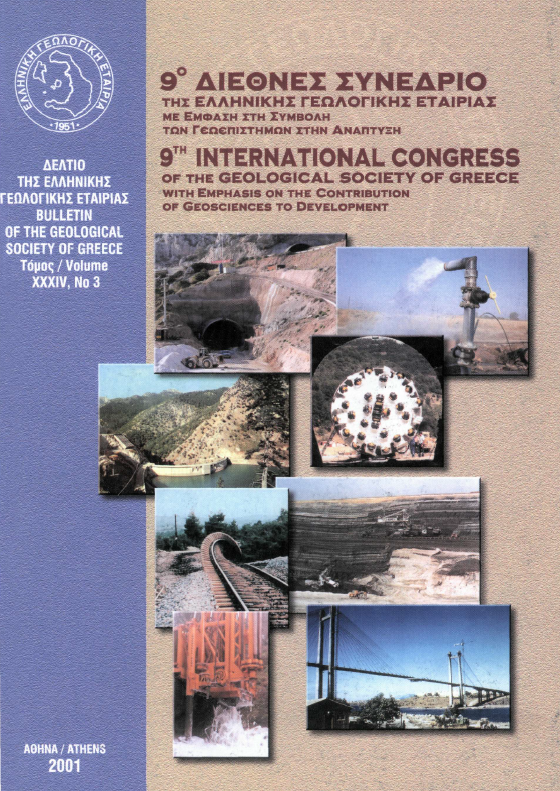LEAD ISOTOPE CHARACTERIZATION OF COPPER INGOTS FROM SARDINIA (ITALY): INFERENCES ON THEIR ORIGINS
Abstract
The provenance of the materials making up the metal artifacts represents a fundamental question for archaeological research. The complex processes necessary to extract the metals from the minerals cause considerable changes in their chemical composition. By contrast, the ratio of the different lead isotopes in artifacts is not influenced by metallurgie processes. Therefore, the raw mineral material and the extracted metal exhibit the same isotope "footprint". Over the course of history, Sardinia has played a major role in maritime routes. Its considerably rich mineral resources, with copper, lead and iron mineralizations, moreover complemented its strategic importance. During the 10th and 9th centuries BC Sardinia, because of its strategic location, was to become directly involved in the "precolonial" Phoenician expansion. Two repositories of copper ingots recovered at different levels within a nuragic village in northwest Sardinia, can be placed within this historical context of intense traffic and exchange of goods between native Sardinian and Phoenician communities. The ingots were made in different shapes: plane-convex, biconvex, truncated cone and irregular. The analyzed ingots exhibit a considerable lead isotopie variability, although no systematic differences in isotope composition were revealed between the ingots from the two different repositories. Moreover, no systematic isotopie variations were observed between the different shapes in which the material was found. Overall, the ingots exhibit a linear distribution in the lead/lead diagrams. The group of ingots with the lowest isotope ratios project onto the area defined by the northwestern Sardinian mineralizations. The ingot located on the other extreme end of the straight line in the Pb diagrams overlaps the area defined by the southern Sardinian deposits. The isotope footprints of the intermediate samples seem to indicate that they stem from the mixing of two components from two different mining areas of Sardinia, one in the north, the other in the south. Therefore, widespread exchange of metal must have taken place throughout the island, and such an exchange does not seem to have been hindered by the advent of the Phoenicians in Sardinia. The results of the present investigation indicate that the majority of the examined ingots was produced with metal from the northwest of the island, and that these mines were therefore known and exploited in nuragic times. Such findings shed new light on the complex issues involved in proto-historic Sardinian metallurgy
Article Details
- How to Cite
-
Pinarelli, L. (2004). LEAD ISOTOPE CHARACTERIZATION OF COPPER INGOTS FROM SARDINIA (ITALY): INFERENCES ON THEIR ORIGINS. Bulletin of the Geological Society of Greece, 36(3), 1173–1180. https://doi.org/10.12681/bgsg.16460
- Section
- Geoarchaeology

This work is licensed under a Creative Commons Attribution-NonCommercial 4.0 International License.
Authors who publish with this journal agree to the following terms:
Authors retain copyright and grant the journal right of first publication with the work simultaneously licensed under a Creative Commons Attribution Non-Commercial License that allows others to share the work with an acknowledgement of the work's authorship and initial publication in this journal.
Authors are able to enter into separate, additional contractual arrangements for the non-exclusive distribution of the journal's published version of the work (e.g. post it to an institutional repository or publish it in a book), with an acknowledgement of its initial publication in this journal. Authors are permitted and encouraged to post their work online (preferably in institutional repositories or on their website) prior to and during the submission process, as it can lead to productive exchanges, as well as earlier and greater citation of published work.




